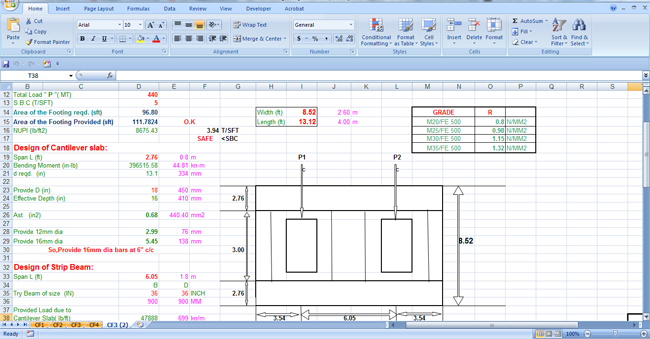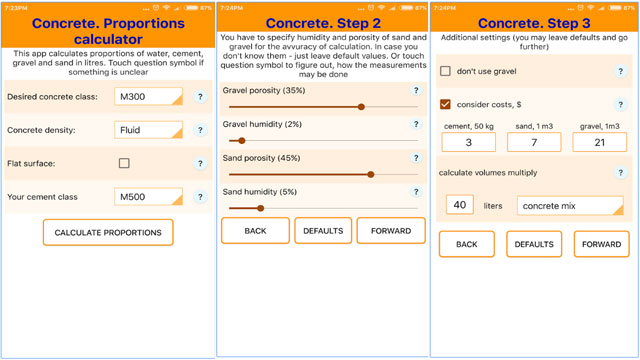Bar bending schedule offers the reinforcement calculation for reinforced concrete beam. It supplies details of reinforcement cutting length, type of bends and bend length.
Here we will take one example for reinforcement quantity calculations for a concrete beam.
Example of RCC Beam Reinforcement Calculation:
Assume a beam of clear length of 4m, 300mm wide by 450mm depth. It consists of 2-12 diameter bars at top, and 2-16 diameter and 1 – 12 diameter bars at the bottom. Diameter of stirrup is 8mm spaced at 180mm center to center. Clear cover to reinforcement provided is 40mm.
Now we will calculate the length of reinforcement on the basis of shapes of reinforcement mandatory for reinforced concrete beam in above example.
We will start with bottom reinforcement, B1.
Bar shape of B1 is as shown below:
RCC Beam Bar Bending Shape
Length of B1 = clear distance between walls + 2 x width of walls – 2 x bar cover + 2 x bend length
Bend length = 6 x 16 = 96 consider as 100mm
Bend length is calculated as 6 x diameter of bar for reinforcement conforming to IS: 1786-1961
Length of B1 = 4000 + 2 x 230 – 2 x 40 + 2 x100 = 4580mm
Length of bar B2 is calculated on the basis of the shape of this bar. This bar bends up closer to the support as shown below:
RCC Beam Bar Bending Shape
Length of bar B2: A + B + C = 4000 + 2 x 230 – 2 x 40 + (1.414xH – H)
H = 450 – 2 x 40 – 2 x 12 – 2 x 12/2 = 334mm
B2 = 4000 + 2 x 230 – 2 x 40 + (1.414×334 – 334) = 4518.3 = 4520mm
Length of Bar T1 = 4000 + 2 x 230 -2 x 40 = 4380mm
Length of Stirrups S1:
RCC Beam Stirrups Length Calculation
Stirrups are spaced at 180mm center to center. Stirrups are provided between walls or support for a beam.
No. of stirrups required for given beam = No. of Stirrups
Length a = 450 – 2 x40 – 8 = 362mm
Length b = 300 – 2 x 40 – 8 = 212mm
Therefore length of 1 stirrup S1 = 2 x (212 + 362 + 90) = 1328 mm
Where 90mm is the minimum hook length as per IS 2502 – Table – II.
~~~~~~~~~~~~~~~~~~~~~
Published By
Rajib Dey
~~~~~~~~~~~~~~~~~~~~~

